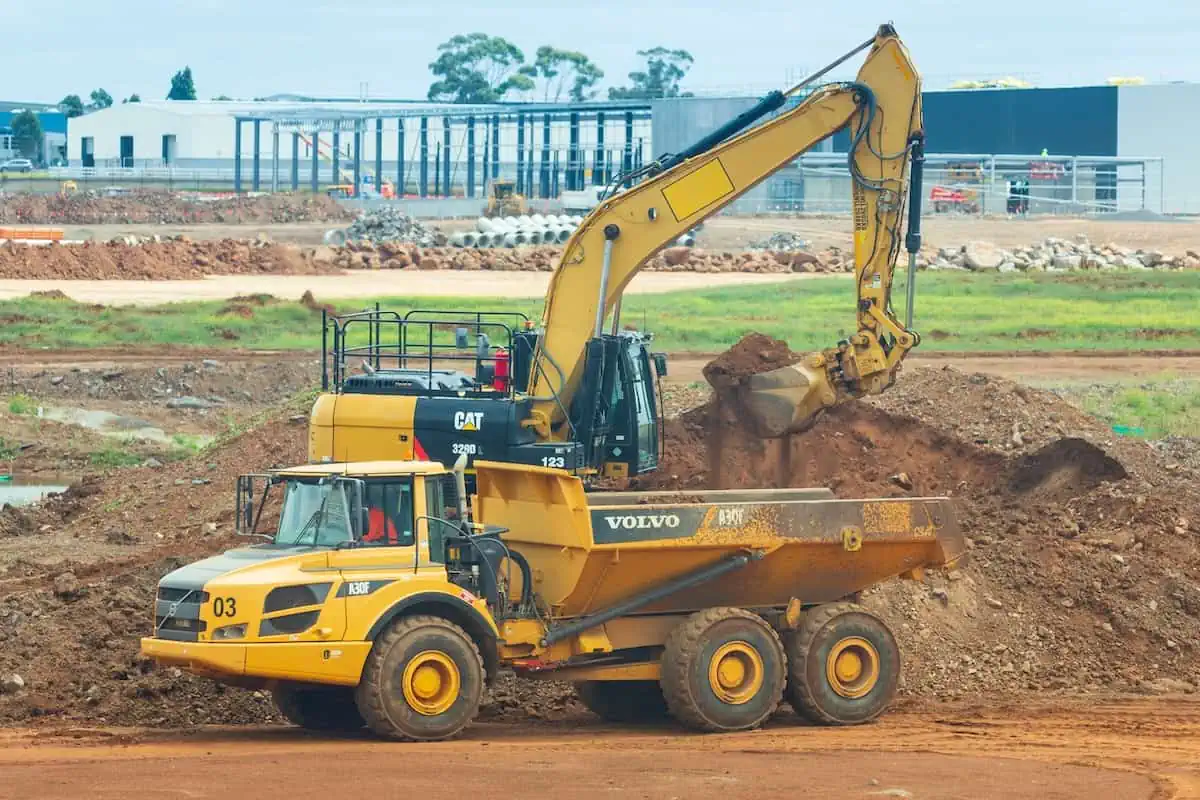When you’re considering making an investment in used heavy equipment, whether you’re buying from a local dealer moving a trade-in or from online heavy equipment auctions, it’s important to make sure that you’re making a sound investment to minimize risk. Part of that process involves conducting a thorough inspection of the heavy equipment in question.
Following a checklist can provide direction as you go through the inspection process, telling you what to look for, what to test and what issues should raise significant concerns when purchasing a piece of heavy equipment.
Used Heavy Equipment Inspection Checklist
1. Does it run and run well?
Though it seems like an obvious question, there are any number of auctions conducted where a piece of equipment will not start, and the auctioneer passes off the issue by stating that the equipment must be out of fuel.
In addition to noting if the equipment starts easily, take time to note the color of the exhaust, if any, as well as any strange noises that occur either while the equipment is running, in operation or as it shuts off.
These noises can be a sign of a much larger problem, such as poor hydraulic pressure, expensive engine issues or similar areas of interest that should be noted and checked out before proceeding with the sale or auction.
2. Are the fluids clean and at optimal levels?
While it may seem straightforward to inspect the fluids, a visual check can miss many underlying issues. It’s always advisable to obtain a fluid sample and have it tested by an independent lab. This analysis can reveal hidden problems, such as contamination with incorrect fluids and metal chips, flakes, or debris, indicating potential internal damage.
There are instances where individuals, in an attempt to disguise problems, might add fresh fluid to equipment. This is done to conceal issues that only become apparent during detailed inspections. Fluid levels that are too high or too low can be telltale signs of leaks or overpressure issues within the system.
Although thorough inspections and testing can uncover many issues, there will eventually come a time when purchasing new hydraulic equipment is a more viable and economical option. Investing in new machinery mitigates the risks associated with unexpected failures and maintenance challenges often found in aging systems. For instance, newer hydraulic systems come with hoses sourced from a reliable hose shop, ensuring high quality and durability.
In the long run, this investment in new equipment can significantly enhance efficiency and safety and yield substantial savings.
3. Is the exterior, especially tires, underbody and surface rust in acceptable condition?
Take the time to do a thorough walk-around inspection of the equipment’s outside. Does it show reasonable wear and tear, or does it seem to have excessive — or virtually no — wear?
Though equipment that is in great condition can seem like a great buy, be aware that body panels could have been changed out or freshly painted on severely abused equipment. Take a solid look at the tires and underbody, as well as any areas of rust to ensure that it is only on the surface and not going through the body.
If the tires show uneven wear, the underbody is dented more than usual or there is significant rust in unusual areas, you may want to pass on the equipment, as these are often signs of a more serious issue.
4. Are there signs of repair or alteration?
Whether it’s signs that welding has taken place, parts that don’t match the wear of the rest of the machinery or signs that alterations have taken place can indicate that repairs were not necessarily handled by trained technicians. An especially important alteration is the removal of safety features, such as guards, panels and similar parts.
Make note of how many parts of the equipment or what percentage of the equipment seems to have been repaired or welded, and in what locations, because this can be a sign of abusive usage or poor maintenance and repair processes.
5. Is there good documentation of regular maintenance, necessary repairs, upgrades or inspections?
A company that is concerned about protecting the value of its assets will focus on ensuring that regular maintenance, necessary repairs, equipment upgrades or regular inspections are documented very well to ensure that the records are as complete as possible.
This is because if there was a problem with the equipment that may be protected under a manufacturer’s warranty, the company would need to document that it had undertaken necessary actions to protect the value of the equipment. A lack of documentation demonstrates a lack of care for the equipment, which is often reflected in its condition.
By taking the time to perform a thorough inspection on used heavy equipment that you’re considering purchasing, you can reduce your risk in the purchase process and ensure that your purchase will provide strong value to your company for many years to come.
Failure to check the equipment you’re purchasing can lead to premature failure of the equipment, causing a significant financial loss to your business and creating an impact on your company’s finances as you replace the equipment.
SOURCES
https://blog.mascus.com/what-to-inspect-when-purchasing-used-heavy-equipment/
https://quipli.com/heavy-equipment-inspection-checklist-with-free-pdf-download/
https://www.bidequip.com/blog/heavy-equipment-inspection-checklist/
https://www.boqfinance.com.au/blog/featured/things-to-consider-when-purchasing-used-equipment
Article and permission to publish here provided by Lucas Jackson. Originally written for Supply Chain Game Changer and published on December 26, 2023.
Cover photo by Troy Mortier on Unsplash.

